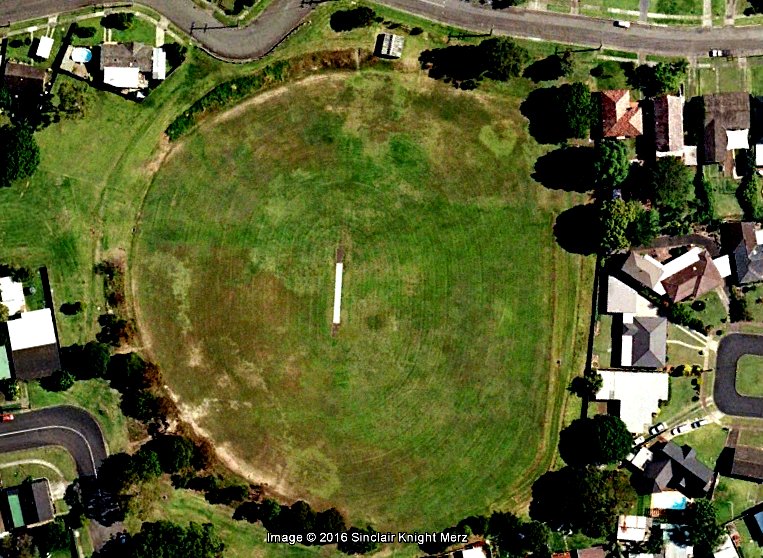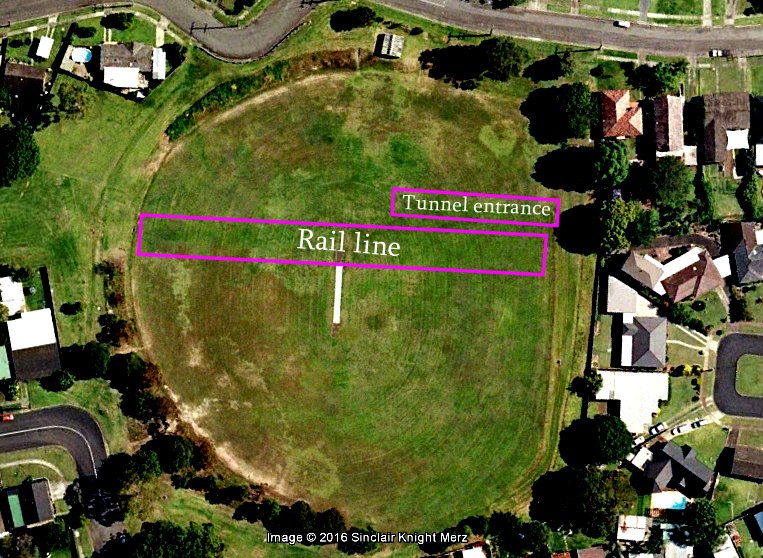In archaeology a parch mark is where variations in vegetation growth reveal underlying archaeological features. They most often show up where stone or brick ruins underneath the surface means that there is less soil, and in dry seasons the vegetation in these areas will wither before other areas with deeper levels of topsoil, thus revealing the underlying structure in aerial photographs. Parch marks have sometimes appeared in Britain’s Channel 4 program “Time Team“, revealing ancient Roman structures.
I was excited to discover today photographic evidence of some historical parch marks in my own suburb. The present day Lewis Oval in New Lambton is built over the location of the former Lambton colliery, pretty much in the spot shown in the photograph below.
Overlaying an old map onto Google Earth confirms that the rail line and inclined mine tunnel entrance used to be where Lewis Oval is now.
I reasoned that these former excavated regions for the railway and mine tunnel would cause slight subsidences in the surface of Lewis Oval, causing water to pool in these areas more, and that in dry times the vegetation in these areas would remain greener for longer. I opened up the historical images feature of Google Earth and browsed through the available images, and bingo – there was an image from 2006 that clearly showed the location of the mine rail and tunnel. I have enhanced the contrast in the image below to make it stand out a bit more.






Pingback: Community disengagement | A bit of this, a bit of that
This is nothing more than an idea but the “Annual report of the Department of Mines, New South Wales, for the year 1877” references Thomas Lewis the NSW Inspector of Collieries living in Lambton.
No doubt it’s a common name but thought I’d throw it out there, they could just be named after two completely different people.
Pingback: Lambton Colliery, 1944 | A bit of this, a bit of that
Hi Lachlan,
I meant to ask in response to your article on Paddy Lewis whether the name Lewis relates to Lewis Oval in Durham Rd and indeed Lewis Constructions. My next door neighbours are Brian and Madeleine Atkins (born Lewis) who carried on the Lewis Construction business and were responsible for a number of costructions in Newcastle including the Lambton Anglican Hall and Young People’s theatre in Hamilton. I understand that they had premises next to the cycleway at the Junction of Croudace Street and Howe Street.
Good questions Jim. I’ve wondered myself whether there was any connection between Lewis Oval and Paddy Lewis Dam, but I have seen no information on why Lewis Oval was named that way, so I don’t know.
Hi Lachlan,
I find all your articles are very interesting. Keep up the good work.